HRM4001Developing Personal and Management Skills Assignment Sample
1. Transferable Skills
The transferable skills are regarded as the qualities that are transferable from one to another job based on the requirements of the new job. Several transferable skills can be applied to a new job as listed below.
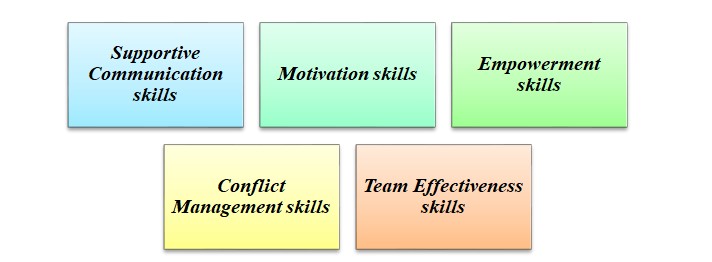
Figure 1: Different transferable skills
(Source: Self-Created)
Supportive Communication skills
The “supportive communication skills” refer to the ability to identify and solve one’s problems instead of depending on others to solve them. These skills can be obtained by listening to the guidance provided in the workplace and sharing opinions among the team members.
Supportive communication enables an individual to analyse the root cause of an issue along with the mitigating solution (Abdallah and Jibai, 2020).http://HRM4001 Developing Personal and Management Skills Assignment Sample For instance, the managers in organisations not only express their views, however, also support the opinions of their team members.
Motivation skills
“Motivational skills” is regarded as the strategies or actions that can stimulate the desired behaviour as well as the responses from the stakeholders. In addition to this, these skills also help to increase the happiness of the team, inspire the employees, enhance productivity and ultimately increase the revenue of the organisation.
For instance, organisational leaders adopt motivational skills in order to enhance the productivity and profits of the enterprise, which also helps the company attract more targeted customers.
Empowerment skills
“Empowerment skills” is regarded as the process of inspiring the employees, which enables them to think, manage, take action, behave as well as make decisions in order to achieve the goal of their career.
There are five types of empowerment skills including coping skills, intellectual skills, manipulating skills, artistic skills, and communicative skills. Coping skills are the ability of an individual to adapt to the work environment for career advancement. Intellectual skills are the ability to apply innovative ideas to solve any issues within the workplace (Abu-Rumman, 2021).http://HRM4001 Developing Personal and Management Skills Assignment Sample
Manipulating skills are mostly used by organisational managers that refer to the ability to control team members by making them believe in their opinions. In the context of management, artistic skills are the ability to manage multiple activities such as preparing financial datasheets, marketing and development strategies, and many more.
Conflict Management skills
“Conflict management skills” are crucial in organisational management since an organisation works with employees having different behavioural attributes. In case the opinions of the employees do not match within the group, there is a chance of conflict arrival. Hence, it is the responsibility of the manager to handle these situations calmly and unbiased.
Moreover, the employees may lose their patience in case they are punished for their conflicts. Hence, in order to apply conflict management skills, the organisational managers are required to avoid punishment and communicate with the team members regarding their issues. For instance, the organizational managers induce compromising attitudes within employees in order to mitigate conflicts.
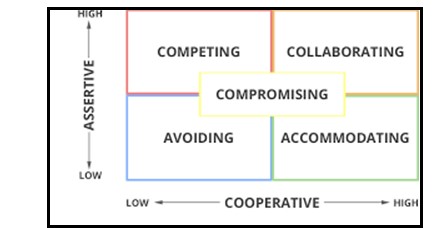
Figure 2: Conflict Management Skills
(Source: Ana et al. 2020)
Team Effectiveness skills
The “team effectiveness skills” are regarded as the qualities required for increasing the effectiveness of the team. These skills help the organisational managers to increase critical thinking among the team members.
Team effectiveness is increased by motivating team members to work together through team collaboration (Ana et al. 2020).http://HRM4001 Developing Personal and Management Skills Assignment Sample Furthermore, enhanced team effectiveness is necessary for inducing a problem-solving attitude among the workers. The most important aspect of team effectiveness is effective communication.
2. Application of transferable skills in management
Application of Supportive Communication skills
Supportive communication is applied by the management teams within the workplace in order to motivate the employees by supporting their opinions along with providing their own views.
Team management is a trust-building process and the team members are able to actively participate in the communication only when they have trust in the manager (Sousa and Rocha, 2019).http://HRM4001 Developing Personal and Management Skills Assignment Sample Communication can be applied in the process of project planning and project management.
In the cases where the team members communicate with each other and discuss the issues and mitigating factors, the work productivity is increased.
Application of Motivation skills
The motivation skills are applied to team management through an inspirational and motivational work environment. In order to boost employee confidence, the managers motivate employees with rewards and appraisals.
Moreover, these skills are helpful to the team manager in obtaining team engagement through motivating workplace opportunities (Daniel and Ugochuku, 2020). http://HRM4001 Developing Personal and Management Skills Assignment SampleActive participation and interest of workers in specific organisational projects increase the overall performance of the organisation.
This is the reason that the managers focus on keeping their employees motivated during the working period (Emeasoba et al. 2020).http://HRM4001 Developing Personal and Management Skills Assignment Sample For instance, the organisational managers ask for input from the employees about effective organisational decisions. Furthermore, they provide workers with personality development resources in order to boost their productivity and creativity.
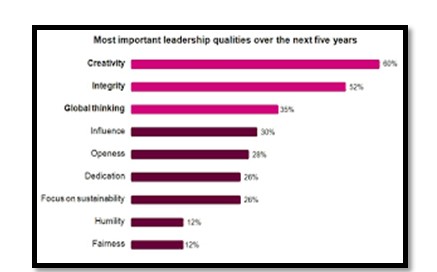
Figure 3: Effectiveness of Leadership qualities
(Source: Flourish et al. 2020)
Application of Empowerment skills
The empowerment skills are applied in the workplace for controlling the overall organisational behaviour. Workplace managers control their workers by empowering them to participate in the process of organisational decision-making.
Moreover, they emphasize workers to be purpose-driven during the task handling which means the employees have the flexibility of implementing improvisations as per the situational demand of the task.
Application of Conflict Management skills
The “conflict management skills” are applied in the workplaces to avoid the disagreement among workers and make impartial decisions. The workplace managers listen to their employees irrespective of their own opinions regarding the conflict.
The reason for listening to workers is that the workers feel valued when their views are considered by the organisation (Flourish et al. 2020).http://HRM4001 Developing Personal and Management Skills Assignment Sample Organisational managers apply these skills by conducting open discussions with the workers and avoiding criticizing the employees.
Application of Team Effectiveness skills
The workplace managers apply team effectiveness skills in order to increase team capability and organisational performance. The managers apply these skills by setting the organizational goals and diving roles to the team members based on their experience and skills.
Team management also requires an understanding of the organisational target and hence, the management explains the procedures related to the assigned project through supportive communication (Guzmán et al. 2020). http://HRM4001 Developing Personal and Management Skills Assignment SampleBy conducting open communication, and obtaining feedback from workers, the managers are able to enhance interpersonal relationships with the team members.
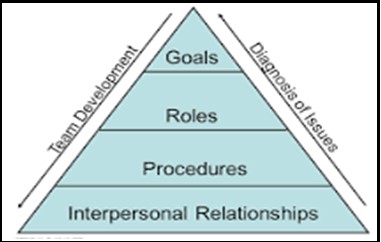
Figure 4: Factors affecting team effectiveness
(Source: Emeasoba et al. 2020)
3. Theoretical application of supportive management and leadership skills
The utilisation and application of supportive management and leadership skills are evaluated through the theoretical analysis of leadership. The contingency theory can be beneficial in analysing the attributes of management and leadership.
Contingency theory
This theory determines that only one specific leadership style is applicable to every organizational situation, and hence, the organisational leaders are required to adopt different leadership styles based on the situational demands in the workplace. The workplace environment changes from time to time based on the recent corporate trend.
Application of contingency theory in supportive communication skills
The supportive communication skills are utilised through this theory by communicating with team members regarding the improvisations required in the organisational decisions (Henkel and Bourdeau, 2018). http://HRM4001 Developing Personal and Management Skills Assignment SampleThe team leader obtains a proper management style which may vary from time to time based on the employee performance and productivity.
Open communication helps the leader to analyse the current requirement within the workplace and provide effective solutions in order to retain team engagement. The leaders communicate about the organisational policies such as leave policy, employment wages, employee provident fund, and gratuity policy.
The workers are able to obtain a clear view of the rules and regulations of the workplace and also clear their doubts through active communication.
Application of contingency theory in motivation skills
The contingency theory helps leaders to motivate their employees with different approaches based on the current scenario of the organization. The theory determines several motivating activities that can be applied in the workplace depending on the task requirement.
The leaders decide on rewards and appraisals depending on the progress rate of the employees and improve the appraisal policies based on the project’s success. The employees get motivated by the different types of career growth opportunities (Karunakaran and Huka, 2018). http://HRM4001 Developing Personal and Management Skills Assignment Sample
The managers also change the promotion policies based on the employee engagement reports and the workers are able to experience multiple dimensions of workplace behaviour.
Application of contingency theory in empowerment skills
The managers apply contingency theory by allocating diverse responsibilities to employees based on their abilities and expertise. This fosters their confidence to perform better and make instant decisions as per the task requirement.
The managers further provide the workers with organisational growth opportunities which empower them to implement innovative ideas to achieve career advancement and contribute to the organisational success.
Application of contingency theory in conflict management skills
Open discussions are beneficial in sharing each other’s opinions and making unbiased decisions for the employees. One reason behind workplace conflict is the cross-cultural differences among employees (Kocherbaevaet al. 2019).http://HRM4001 Developing Personal and Management Skills Assignment Sample Hence, the managers conduct various cultural programs and cross-cultural training in the workplace in order to avoid conflicts.
Application of contingency theory in team effectiveness skills
The contingency theory helps organisational leaders build a strong bond with the employees. A trustworthy relationship among team members can help them express their ideas regarding the task and increase the team’s effectiveness through productive and creative ideas.
Through effective communication, the team members are able to share their own perspectives regarding the project and a multidimensional approach to the project issues can be obtained (Littman et al. 2020).http://HRM4001 Developing Personal and Management Skills Assignment Sample The suggestions gathered from each team member are beneficial in obtaining organisational success.
Task 2
4. Reflection of management and leadership skills using a range of models
A leadership model acts as a theoretical framework that proposes the best way to manage employees in the workplace or can be implemented by an individual to practice leadership skills.
Leadership models help to identify the proper structure for defining management methods that match the work style and personality of an individual (Crisp and Alvarado‐Young, 2018).http://HRM4001 Developing Personal and Management Skills Assignment Sample The transactional and democratic models of leadership best describe the five mentioned skills.
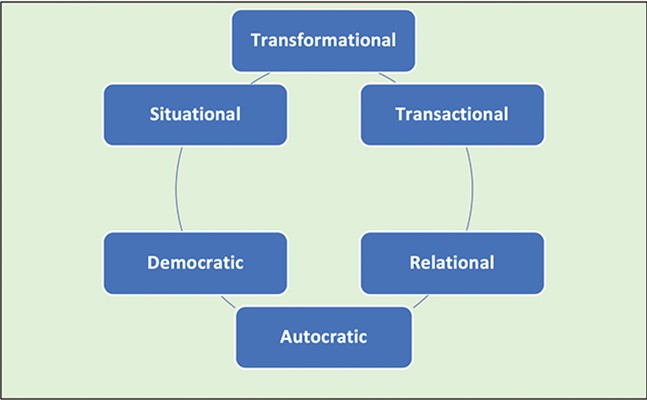
Figure 5: Different leadership models
(Source: Guzmán et al. 2020)
The transactional leadership model is based on a reward system that believes that the personal interests of employees act as the principal motivating factor to complete assigned tasks.
Transactional model of Supportive Communication
In the transactional model of supportive communication, communication is represented as a process where communicators generate social or cultural realities.
I think that these realities prove to be beneficial in forming new relationships or shaping self-concept.
The model describes an individual as sender and receiver at the same time and therefore, they are called communicators (Guzmán et al. 2020).http://HRM4001 Developing Personal and Management Skills Assignment Sample Supportive communication in the transactional model of leadership helps to set up realities rather than communicate about those.
Transactional model of Motivation
The transactional model of motivation describes that the manager sets performance goals for team members and promises them a reward after the successful completion of the task.
I believe the effectiveness of transactional leadership in the context of motivation lies in its objective that is to motivate and direct an individual with the help of their own self-interest.
This power in transactional leaders comes from the formal authority and responsibility that they hold in the organization (Hackworth et al. 2018).http://HRM4001 Developing Personal and Management Skills Assignment Sample Subsequently, the main objective of the follower in this model is to obey the instructions of the leader.
Transactional model of Empowerment
The transactional model of empowerment defines that workers depend on rewards and punishments to achieve their goals in the workplace. Rewards and punishments both contribute significantly to empowering employees in the workplace.
Transactional leaders reward employees with good performance and punish those who fail to perform according to the standards of organizational objectives (Iordanoglou, 2018).http://HRM4001 Developing Personal and Management Skills Assignment Sample
As an example, the transactional leadership model is mostly used in the medical industry where nurses are empowered to take part in every small activity to meet short-term activities such as completing a task within a deadline.
Transactional model of Conflict Management
The transactional leadership model of conflict management proves beneficial for organizations to reduce conflicts among employees and ensure smooth workflow.
In my opinion, the transactional leadership model of conflict management provides authority to the leader who can resolve conflicts with that authority and the resolution serves the company’s purpose.
Leaders following the conflict management leadership style focus on the objectives of the organization rather than the needs of employees involved in the conflict.
Transactional model of Team Effectiveness
I think that the transactional model of team effectiveness is the most significant in terms of employee performance. The model keeps everything working in a scheduled manner that is regulated by certain policies and procedures.
I believe that most renowned organizations around the world follow this model to set aggressive quotas for their employees. In case these quotas are met, employees would get a bonus. otherwise, they might lose their job also.
The democratic leadership or participative leadership model defines that it is important to seek input and feedback from team members, but the leader would make the ultimate decision.
The model further reflects the fact that the discussion can help to generate creativity and innovation in the workplace (Caillier, 2020).http://HRM4001 Developing Personal and Management Skills Assignment Sample However, the leader may face challenges in certain situations due to the diverse perspectives of employees.
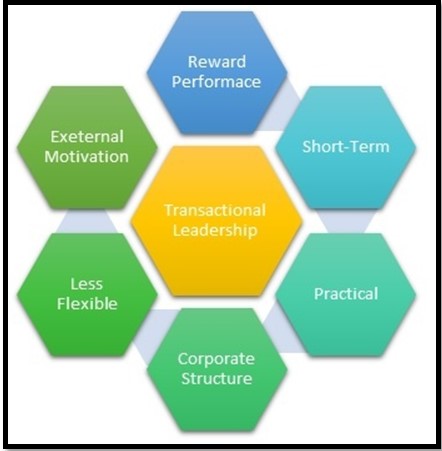
Figure 6: Transactional leadership style
(Source: Sebastian et al. 2019)
Democratic model of Supportive Communication
The democratic model of supportive communication represents communication as one of the most important factors in an organization.
Furthermore, the model defines that the staff inputs help to come up with a creative solution to every problem causing loss to the organization (Rubens et al. 2018).http://HRM4001 Developing Personal and Management Skills Assignment Sample I believe that the model of supportive communication helps a company to practice cross-cultural activities in the workplace.
Democratic model of Motivation
An important aspect of the democratic leadership model is self-motivation. Self-motivation provides an opportunity for the individual to fulfill his or her personal objectives. I think the reason behind the success of this model is its capability to protect every individual’s ability to initiate a project of theory own and even complete that.
The model further states that motivation is the key to success, particularly for an employee working in the retail or medical sector (Sebastian et al. 2019). http://HRM4001 Developing Personal and Management Skills Assignment SampleThe democratic leader always gives the example of himself to his employees for motivating them to complete a task within the deadline.
Democratic model of Empowerment
The democratic model of empowerment refers to two different means of democratic empowerment, namely a predominantly aggregative and a predominantly integrative empowerment strategy.
The primary mean of the first strategy is ‘exist’, whereas the mean for the second strategy is ‘voice’.
Democratic model of Conflict Management
The democratic leadership model proves to be the most significant model to manage conflicts in an organization. According to me, the other tools of conflict resolution are not applicable in the long term due to their risky nature.
The democratic model proves beneficial because its principles and rules are effective in managing inevitable social conflicts. Apart from these, I believe democratic leaders are more successful to reduce managerial conflicts compared to other leaders as they also participate in the tasks along with team members.
Democratic model of Team Effectiveness
In my opinion, the democratic leadership model is the most efficient way to promote team effectiveness in the organization. Democratic leaders ensure team effectiveness in a number of ways such as increasing the engagement of employees or paving opportunities for brainstorming.
A democratic leader aims at providing many options to an employee for performing a task (Zeike et al. 2019).http://HRM4001 Developing Personal and Management Skills Assignment Sample The leaders often invite their team members to share their ideas and opinions in brainstorming sessions. I think that this process influences employees to work together with the help of creative solutions.
5. Personal Development plan
Self Assessment
Self-assessment can help individuals to identify their strengths and weaknesses and work on the weak factors. Moreover, the behavioural attributes of personal development can be analysed through self-awareness.
In order to keep motivated and avoid repeating any wrong decisions, the assessment of past decisions is crucial.
The adaptation of motivational skills is beneficial for individuals to learn how to boost the morale of the employees so that they can work together in order to achieve the goal of the company.
Improving emotional intelligence
Emotional intelligence is crucial for team leaders in order to understand the opinions and suggestions of the team members. Individuals can obtain emotional intelligence by boosting empathy and social skills (Rubens et al. 2018).http://HRM4001 Developing Personal and Management Skills Assignment Sample The execution of social responsibilities helps individuals to inhibit the habit of fulfilling their responsibilities toward team members.
Building dynamic teams
Individuals can obtain effective leadership qualities through working with dynamic teams and analysing the factors affecting team management. Team leaders are required to obtain regular feedback from the team members which is possible through supportive communication.
The management is able to build a trustworthy relationship with the team and obtain updates about the project status through contingency theory.
Moreover, the individual applying supportive communication needs to be capable of clarifying the solutions to the team members (Sauphayana, 2021).http://HRM4001 Developing Personal and Management Skills Assignment Sample The clarification needs to be clear and the person delivering the clarification needs to be confident enough to express his feelings to the team.
Enhance self adaptability
Since effective leadership is completely based on implementing new changes in the leadership styles, it is important for individuals to achieve the ability to adapt to new working circumstances.
Self-adaptability helps in obtaining the flexibility to adjust with team members and work with a positive mindset. The ability of leaders to adapt new project management strategies is based on the feedback of team members. This further increases team engagement and team satisfaction.
Set goals
The contingency theory focuses on selecting the right management strategy and taking action based on situational demand. Therefore, the individuals seeking to lead teams are required to make the habit of setting life goals.
The constant efforts made to achieve life goals create a habit of self-improvement which can be applied to the team members in future (Schoemaker et al. 2018).http://HRM4001 Developing Personal and Management Skills Assignment Sample The leader is required to set goals and motivate the team members to achieve their goals within the scheduled timeline. The task accomplishment on time is evidence of effective leadership and team management decisions.
Improve human skills
The individuals seeking to lead a team can utilise the contingency theory by improving human skills such as problem-solving skills, communication skills, management skills, self-assessment skills, and intellectual skills.
The problem-solving skills help leaders to identify the issues and solve them without panicking. Communication skills help leaders to share their views with team members and manipulate them to work as per the leader’s instructions.
Management skills help leaders to manage various tasks in a collaborative manner (Shum et al. 2018).http://HRM4001 Developing Personal and Management Skills Assignment Sample Self-assessment is beneficial for leaders to utilise their strengths in mitigating their weaknesses.
Intellectual skills help leaders to provide the team members with innovative ideas based on the current task requirement.
Reference
Abdallah, J. and Jibai, S., 2020. Women in leadership: Gender personality traits and skills. Business Excellence and Management, 10(1), pp.5-15.
Abu-Rumman, A., 2021. Transformational leadership and human capital within the disruptive business environment of academia. World Journal on Educational Technology: Current Issues, 13(2), pp.178-187.
Ana, A., Alhapip, L., Barliana, M.S., Rahmawati, Y. and Dwiyanti, V., 2020. Transferable Skills Needed in the Workplace. Journal of Engineering Education Transformations, 34, pp.95-101.
Caillier, J.G., 2020. Testing the influence of autocratic leadership, democratic leadership, and public service motivation on citizen ratings of an agency head’s performance. Public Performance & Management Review, 43(4), pp.918-941.
Crisp, G. and Alvarado‐Young, K., 2018. The role of mentoring in leadership development. New directions for student leadership, 2018(158), pp.37-47.
Daniel, C.O. and Ugochuku, N.R., 2020. Influence of project managers’ leadership style on project implementation. International Journal of Business Marketing and management, 5(2), pp.68-76.
Emeasoba, C.N., Nmuo, A.N. and Ezeani, A.N., 2020. ORGANIZATION AND LEADERSHIP SKILLS REQUIRED OF BUSINESS EDUCATION STUDENTS FOR JOB PERFORMANCE IN UNIVERSITIES IN SOUTH EAST, NIGERIA. Nigerian Journal of Business Education (NIGJBED), 7(2), pp.111-122.
Floris, M., Wiblen, S.L. and Anichenko, E., 2020. Senior project leadership skills and career stallers: Analysis of perception differences and implications for careers. Project Management Journal, 51(2), pp.214-234.
Guzmán, V.E., Muschard, B., Gerolamo, M., Kohl, H. and Rozenfeld, H., 2020. Characteristics and Skills of Leadership in the Context of Industry 4.0. Procedia Manufacturing, 43, pp.543-550.
Guzmán, V.E., Muschard, B., Gerolamo, M., Kohl, H. and Rozenfeld, H., 2020. Characteristics and Skills of Leadership in the Context of Industry 4.0. Procedia Manufacturing, 43, pp.543-550.
Hackworth, J., Steel, S., Cooksey, E., DePalma, M. and Kahn, J.A., 2018. Faculty members’ self-awareness, leadership confidence, and leadership skills improve after an evidence-based leadership training program. The Journal of pediatrics, 199, pp.4-6.
Henkel, T. and Bourdeau, D., 2018. A field study: An examination of managers’ situational leadership styles. Journal of Diversity Management (JDM), 13(2), pp.7-14.
Iordanoglou, D., 2018. Future Trends in Leadership Development Practices and the Crucial Leadership Skills. Journal of Leadership, Accountability & Ethics, 15(2).
Karunakaran, R. and Huka, R., 2018. Leadership skills in primary multipurpose cooperative societies in Ethiopia. Agricultural Economics Research Review, 31(1), pp.131-139.
Kocherbaeva, A., Samaibekova, Z. and Isabaeva, K., 2019, October. Leadership and leaders in successful small and medium enterprises. In 4th International Conference on Social, Business, and Academic Leadership (ICSBAL 2019) (pp. 89-94). Atlantis Press.
Littman, M.J., Mathien, L.D. and Littman, E.S., 2020. Women in Project Management: Opportunities for Leadership Success1, 2.
Rubens, A., Schoenfeld, G.A., Schaffer, B.S. and Leah, J.S., 2018. Self-awareness and leadership: Developing an individual strategic professional development plan in a leadership course. The International Journal of Management Education, 16(1), pp.1-13.
Rubens, A., Schoenfeld, G.A., Schaffer, B.S. and Leah, J.S., 2018. Self-awareness and leadership: Developing an individual strategic professional development plan in an MBA leadership course. The International Journal of Management Education, 16(1), pp.1-13.
Sauphayana, S., 2021. Innovation in Higher Education Management and Leadership. Journal of Educational and Social Research, 11(6), pp.163-163.
Schoemaker, P.J., Heaton, S. and Teece, D., 2018. Innovation, dynamic capabilities, and leadership. California management review, 61(1), pp.15-42.
Sebastian, J., Allensworth, E., Wiedermann, W., Hochbein, C. and Cunningham, M., 2019. Principal leadership and school performance: An examination of instructional leadership and organizational management. Leadership and policy in schools, 18(4), pp.591-613.
Shum, C., Gatling, A. and Shoemaker, S., 2018. A model of hospitality leadership competency for frontline and director-level managers: Which competencies matter more?. International Journal of Hospitality Management, 74, pp.57-66.
Sousa, M.J. and Rocha, Á., 2019. Leadership styles and skills developed through game-based learning. Journal of Business Research, 94, pp.360-366.
Zeike, S., Bradbury, K., Lindert, L. and Pfaff, H., 2019. Digital leadership skills and associations with psychological well-being. International journal of environmental research and public health, 16(14), p.2628.
Appendices
Appendix 1: Personal development plan
| Development plans | Actions | Duration |
| Self Assessment |
|
2 to 3 months |
| Improving emotional intelligence |
|
3 to 4 months |
| Building dynamic teams |
|
5 to 6 months |
| Enhance self adaptability |
|
1 to 3 months |
| Set goals |
|
4 to 5 months |
| Improve human skills |
|
6 to 7 months |
Appendix 2: Factors impacting Contingency Theory
Appendix 3: Factors of leadership and management
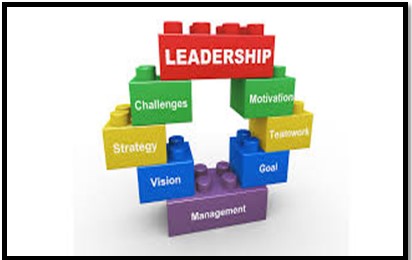

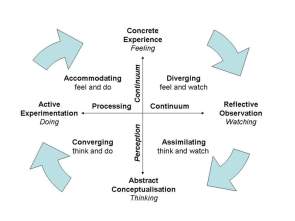

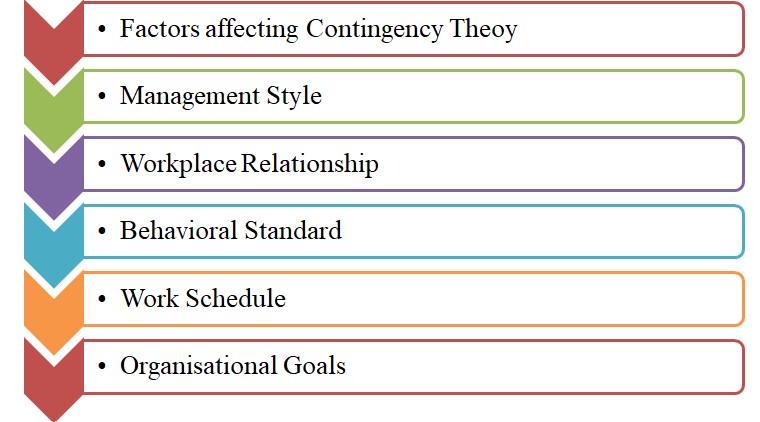
After reading your article, I have some doubts about gate.io. I don’t know if you’re free? I would like to consult with you. thank you.